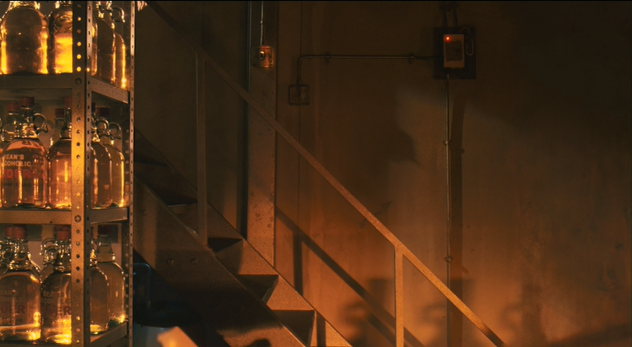Fantastic Mr. Fox is a stop-motion film directed by Wes Anderson. It was based off of the children’s book of the same name by Roald Dahl. This movie is the first animated film made by Wes Anderson. Even though it was not filmed with human actors and real settings, Anderson stays true to the camera angles, unrealistic character placements, and muted color palettes that he is known for. Advertising for this film targeted a young audience, but the movie also appeals to adults because of its nostalgic atmosphere and realistic plot themes.
The main plot of this film is one that is simple for children to understand. Mr. Fox, the main character, gives up his livelihood of stealing from nearby farmers when he learns he is going to have a son. During a midlife-crisis, he decides to steal one last time. The farmers whom he steals from are furious. They go after Mr. Fox and endanger his family and neighbors. In the end of the movie, Mr. Fox outsmarts the farmers and all the animals find a new home in the not-so-dirty sewers beneath a fully-stocked supermarket.
The movie opens with a scene that features Mr. Fox, a seasoned thief, and his romantic partner, Felicity, as they attempt to steal squabs from a nearby farm. As the pair are fleeing from the scene, they get caught in a trap. Felicity reveals that she is pregnant and makes Mr. Fox promise to stop stealing. The audience gathers, from future scenes, that Mr. Fox makes this promise. This scene relates to what many humans do when they discover they are going to be parents; they search for stability so that they can create a safe environment in which they can raise their child. The relatability of this scene for many adults brings back personal memories and can cause the adult to form a connection to the film. They may be reminded of their own experiences with raising children.
Another scene that appeals to older audiences is when Mr. Fox decides to start stealing again. Mr. Fox breaks the promise he made with his wife because he is having a midlife-crisis. Mr. Fox begins to question what he really wants in life because he realizes that he is getting close to the age at which his father died. His job as a newspaper columnist is not bringing satisfaction to his life and he decides to buy a nice, new house because he does not “want to feel poor anymore”. Many humans also go through midlife-crises around the age of forty. They question their purpose in life. Their own confusion is given a form through an animated, animal character.



Throughout the movie, there are references to wolves. Every time the word “wolf” is mentioned, Mr. Fox becomes tense and panics. He claims to have a “phobia” rather than a fear of them. This idea of not being afraid of wolves is curious. Near the end of the film, Mr. Fox finally confronts a wolf. Instead of running away, Mr. Fox shows intense curiosity. He tries to initiate conversation with the wolf, who, unlike the rest of the characters, is not wearing clothes. The wolf never replies. These two traits, nakedness and lack of speech, imply that the wolf is not like the rest of the animals in the movie; he is truly a wild animal. Before Mr. Fox leaves, he salutes the wolf and the wolf salutes back. This camaraderie can be taken to mean that Mr. Fox has come to terms, and ultimately accepts, the animal instincts within him, instincts that he previously blamed for his unfavorable urges to steal.
Wes Anderson uses similar color palettes in all his films. Fantastic Mr. Fox is no exception. The muted oranges, yellows, reds, and browns create a nostalgic atmosphere that is made more intense by the addition of music from the mid-nineteenth century. These warm colors surround the animals of the movie and are contrasted with the cool blues that accompany scenes with the humans. One notable scene that shows the contrast between the warm and cool colors is when Mr. Fox is stealing apple cider from a farmer’s basement. The farmer opens up the door and flicks on the lights. The color of the room turns from a dark, rusty brown to a blue, fluorescent tone. This stark color change creates a menacing tone that gives paints the farmers as cold enemies.
References:
Fantastic Mr. Fox. Dir. Wes Anderson. Twentieth Century Fox, 2009. DVD.
Barsam, and Monahan. Looking at Movie. 5th ed. N.p.: W. W. Norton &, n.d. Print



0 comments on “Fantastic Mr. Fox (First Draft)” Add yours →